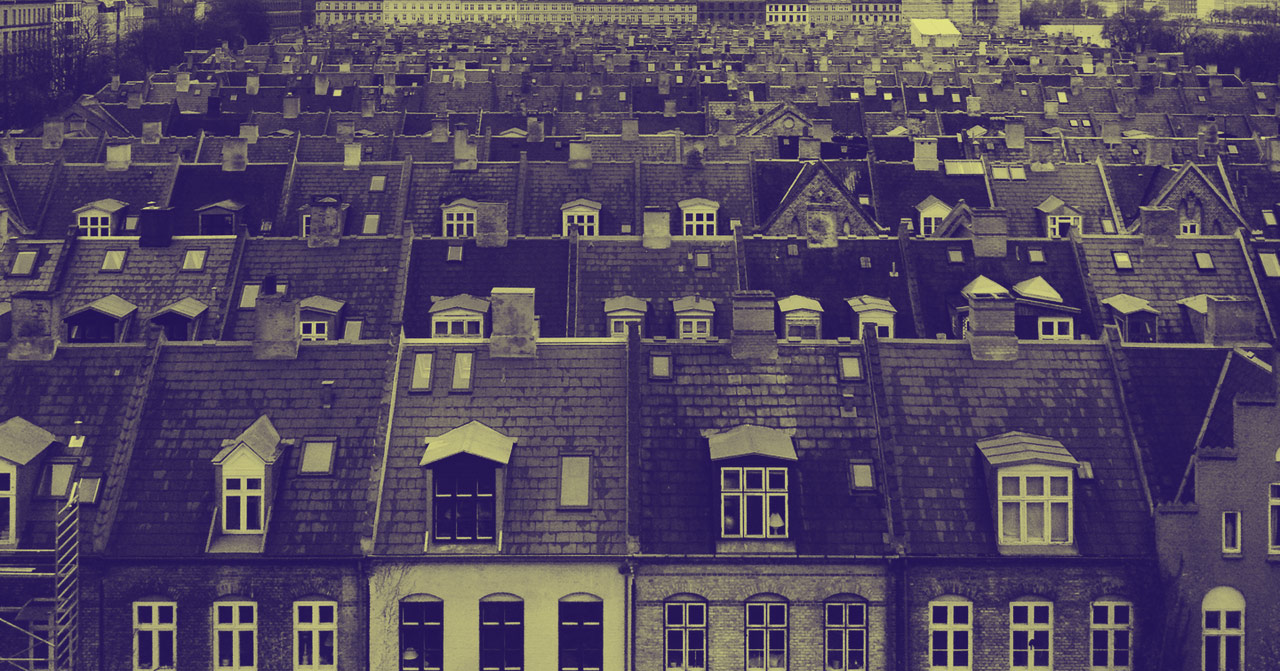Looking for a muse? Check no further. Discover the Best of Art, Culture, History & Beyond!

These 11 small streets of terraced houses are laid out like potato beds running between the old ramparts of Østre Anlæg park and Sortedam Lake. After some of the lakes were dammed up in the 1700s, potatoes were grown here to feed the city’s growing population.
The potato rows
When the Workers’ Building Association bought the land by the lakes, there had been a farm in the area for many years that grew potatoes. This gave rise to the nickname “Kartoffelrækkerne” (The Potato Rows), as the buildings began to grow in stringy rows. The development consists of 480 houses.
The facades are built of yellow brick with red bands and arches above the windows. The gabled houses are particularly decorated with arches and extra bands on the facades, and in Voldmestergade you can see jagged gables and Gothic-inspired features.


From healthy workers’ housing to an inspiring lovers’ neighborhood
At the beginning of the 19th century, everyone in the city lived within the ramparts. Here, construction was carried out at a rapid pace, ever higher and denser, with more side and back houses, the incorporation of basements and the exploitation of the roof ridges – without sewage and with undrinkable water; the streets stank of garbage and excrement, and the rats had their day. The mortality rate among the poor was therefore very high.
With the Constitution of 1849, the new ideal of the time, liberalism, was given free rein, and the industrial bourgeoisie understood how to increase its capital.
But living conditions were a bomb under the fledgling democracy; many feared a social uprising inspired by the revolutionary conditions in contemporary France. Doctors expressed fears of epidemics, but they were not listened to.
It was only when the cholera epidemic broke out in 1853, and 5,000 people died (3% of Copenhageners), that the authorities woke up, also because the bourgeoisie lived side by side with the poor.
A nascent labor movement in the 1870s challenged the desire for organization to achieve political influence both on work and living conditions.
Cheap and healthy rental housing
Immediately after the cholera epidemic, the Medical Association’s Housing (Brumleby) was built outside the city ramparts on Østre Fælled, with the doctor Emil Hornemann as the initiator. However, it was intended more as a quick and necessary solution to the problem than a long-term attempt to provide workers with cheap and healthy rental housing. Also because the opportunity was there, since it had now been permitted to build housing outside the ramparts.
With the dawn of industrialization, the migration from the countryside to the city began, and the need for housing in the capital city increased explosively. As a result, an incredible amount of construction was carried out outside the ramparts in the last decades of the 19th century.
But without special regulations – speculative construction was extensive, and families moved into the backyards of Nørrebro and Vesterbro.

The foundation of the Workers’ Construction Association
This social reality and the romantic realism of the time were the driving force behind the men who in 1865 took the initiative to found the Workers’ Building Association B & W: Through thrift, the workers were to change their living conditions according to the principle of self-help. The initiators had been inspired by England, where the workers had established cooperative consumer and building societies. The solution to the miserable conditions of the working class had to be partly a comprehensive health reform, and partly self-organization. The health reform was now wholeheartedly supported by the capital’s city government, but the long-term reforms – the healthy workers’ housing – still met with resistance. Such reforms could therefore only be implemented by private initiative.
The Workers’ Building Association functioned according to its purpose as a combined building and savings association. A total of 1,776 homes were built in ten neighborhoods. The houses were all built for freehold and rental, with the homeowner as host and primarily members as tenants. This ensured the homeowner support for the purchase of the house and later support for old age care. The 480 houses in Kartoffelrækkerne were built in the period 1873-89.
However, the labor movement never had much sympathy for the Building Society’s terraced houses. They were considered petty bourgeois both economically and organizationally, based as they were on the principle of ownership and rental.
The threat in the 1970s
Throughout the 1900s, the potato rows were typically two- and two-three-family houses with two adults and a couple of children on each floor – an average of eight people per house. Over the years, however, the maintenance standard of the houses became poorer and poorer. The 1970s were a fateful time for the rows. The municipality assessed them as ripe for demolition. The residents fought against it and won; times had changed to a new and different urban planning. The homeowners’ associations of the rows subsequently collaborated with the municipality on a conservation local plan, while the houses were renovated one by one. From the 1970s it became possible to combine the small apartments into single-family houses.
When the Workers’ Building Association was closed down in 1974, an average of two and a half people lived in each house. The homeowners’ associations continued to work to look after the residents’ interests in cooperation with the municipality.
Functionalist architects from the 1920s and 30s did not consider these houses with their small rooms and small kitchens to be anything.
On the other hand, today’s architects have largely adopted the Potato Rows, Jan Gehl with many references to it and Bjarke Ingels with direct inspiration, for example, for the number 8 in Ørestaden.
Text from the official website of Kartoffelrækkerne

This article is published on ArtAddict Galleria, where we explore the intersections of art, history, and culture. Stay tuned for more insights and discoveries